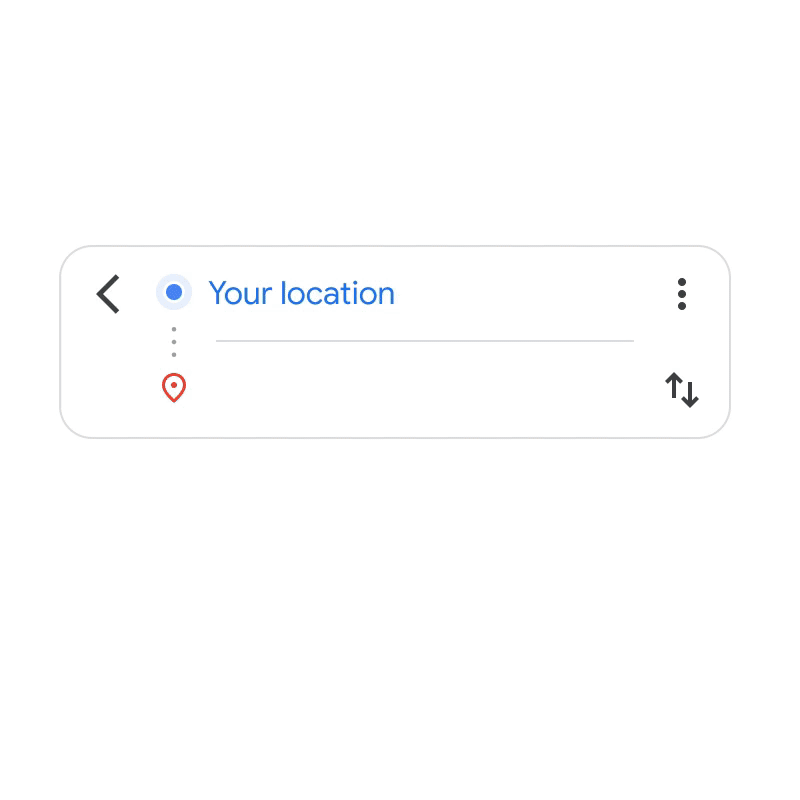More sustainable ways to get from A to B in Australia

Today, we’re sharing new and expanded features in Search and Maps to help people find more information on how to travel more sustainably. From finding fuel efficient routes and driving alternatives like public transport, to understanding the estimated emissions from flying, we’re giving you new tools and information so you can make sustainable choices more easily.
Finding a fuel efficient route
We’ve started rolling out fuel efficient routes in Australia, which lets drivers choose the most fuel or energy-efficient route if it isn’t already the fastest one. This new feature leverages Google’s AI to help people see the relative fuel or energy savings and time difference between the two routes, and choose the one that works best for them. Drivers can specify their vehicle's engine type – whether that’s petrol, diesel, hybrid, or EV – so routing can be optimised to save the most fuel or energy, as this can vary based on the vehicle's engine type and the driving route.
A fuel efficient route between Gold Coast Airport and Broadbeach, showing petrol and energy savings

If you want to choose the fastest route, no matter what? That’s okay too — simply adjust your preferences in Settings.
Driving alternatives
In Google Maps, we’ll start showing a public transit or a walking suggestion next to driving routes if travel times are comparable and practical. This feature will help provide alternatives to driving in the coming weeks in over fifteen cities around the world, including Sydney and Melbourne.
A driving route from Sydney to Bowral – also showing a showing a faster, alternative route option via train.

In 2022, we began showing information on trains directly in Google Search, so it’s easier to find more sustainable options when planning travel. If you search for something like “Sydney to Bowral trains”, you can quickly see schedules and ticket prices right on the search results page, along with links to complete your booking.
For some trips, it may not be obvious when trains are a good alternative to air travel. That’s why last year, we began showing train route suggestions when you look for flights on Search. In the coming weeks, you’ll also begin to see these train route suggestions when you’re using Google Flights, so you can easily find greener options no matter where you begin your search.
Power up your electric vehicle
We’re also making it easier to find information about EV charging stations, whether you’re planning a drive or already on the road. To help EV owners access more helpful information about charging stations, we’re rolling out new features for Google Maps and Search to help you easily find specific information about the location of EV chargers, plan charging stops for road trips and more. Updates will begin rolling out in Australia and around the world, starting with vehicles with Google built-in the coming months.
Understanding emissions from flights
Other times, flying is the only practical way to get from A to B, and the environmental impact of your trip can vary quite a bit depending on the specific flight you choose. With Google Flights, you can see estimated emissions for nearly every flight in the search results, or filter by lower emitting options.
These estimates are powered by the Travel Impact Model (TIM), a methodology we published in 2022 for predicting flight emissions at the individual passenger level. Today, the TIM is used to display emissions estimates on sites such as Booking.com, Expedia, and Skyscanner, through our collaboration with the Travalyst coalition. To make these estimates even more accessible, TIM outputs are now also available through a calculator tool on the TIM website, as well as an API for developers and a Google Sheets extension.
Over time, we’ve improved the TIM by incorporating the latest climate science, and last July, we teamed up with the International Council on Clean Transportation to establish an independent advisory committee that oversees ongoing improvements to the methodology. Through this collaboration, TIM estimates now include lifecycle emissions, allowing us to account for the greenhouse gasses that result from the production and transportation of aircraft fuel, in addition to the fuel burned during a flight itself.
Whether you’re planning your commute or booking a flight, we hope these updates make it easier than ever for you to make sustainable choices.





